I was getting water for the greenhouse the other day out of an old cow trough that fills with rain water. It is nearby and you don't need to wade into it to get the water. Sadly, you do need to watch for polliwogs as they seem to take up residence in there and I don't wanna dump their poor little selves on my plants and they have a habit of swimming in my jug. I also did not feel like taking my shoes and socks off and wading into the pond, nor dragging my 5 gallon jugs to the front of the house and filling them up with the pitcher pump. Laziness inspires me. I started thinking of a better way and the piece that I have.
My dear friend John had gifted me with a small solar panel a while back. I used this to keep a charge on a lawn tractor battery that could run a small 200W inverter and run a pair of 100W CFL (the real 100W CFL's, 5-600W incandescent equivalent) in a couple old stadium lamp fixtures I modified to fir them. The fixtures used to take 750W incandescent lamps. Anyway, someone else gave me an old HF solar set up to power that so I still had Johns small cell mounted to a hunk of wood that was retrofitted on an old 18" satellite dish mount bolted to the building. Being lazy I just unscrewed the panel. I may get the mount later on. FWIW satellite tv dish mounting hardware works pretty good for small solar panels. Just remove the dish from the mount and bolt on a piece of plywood to hold your panel and you are good to go..
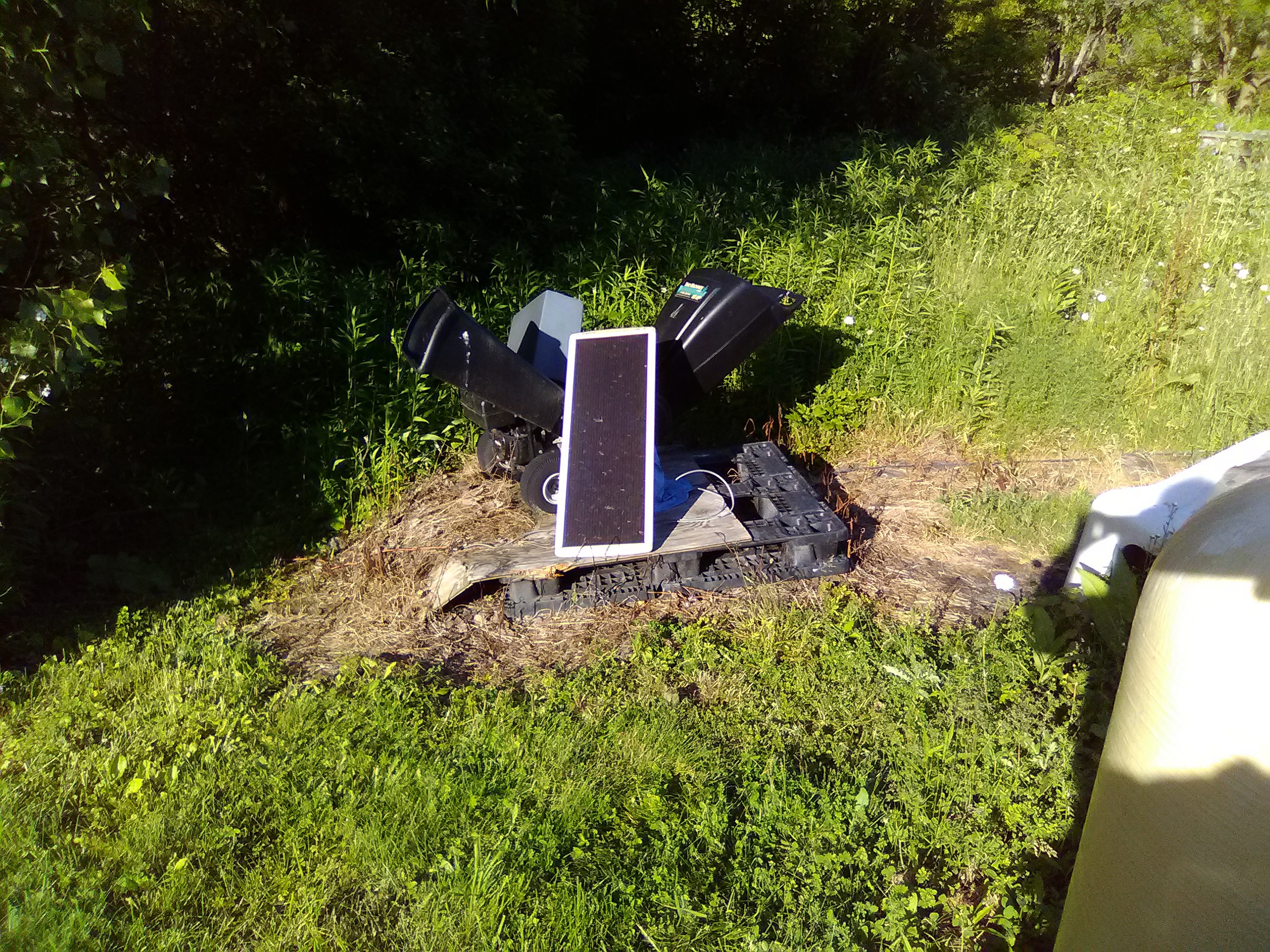
Anyway, I had the panel. My friend Garett had gifted me with a small DC piston pump and a small radiator a few years ago. This was going to be used to water cool a device and the device never go that far. I used the radiator in line with my laser cutter, but I use the AC pump that came with the cutter, so I still have the little DC pump kicking around. The plot thickens..
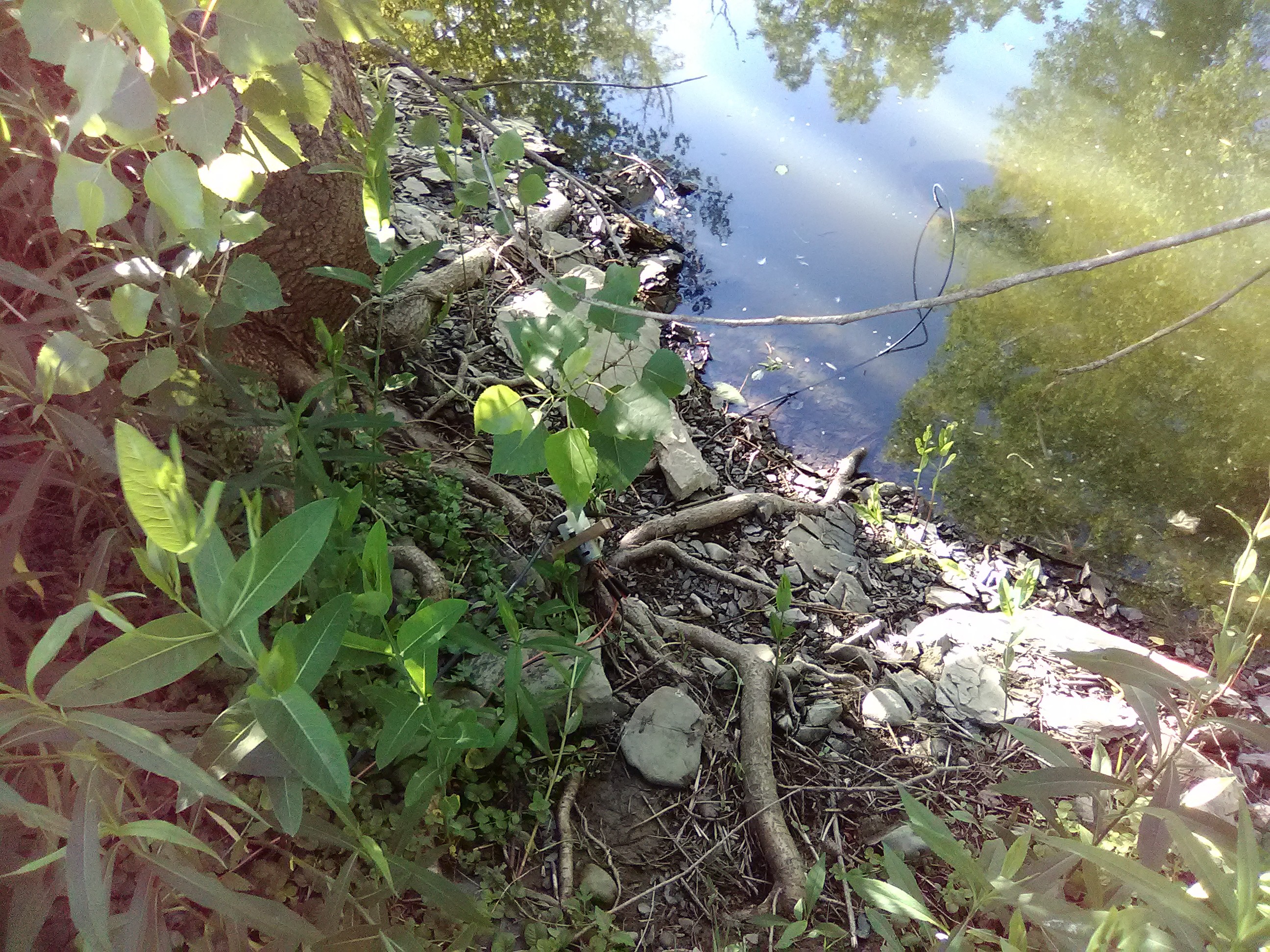
Look close, you can just see the pump hiding on the bank. Like most pumps this one is much better at pushing than it is at pulling, so the nearer to the water level the pump is, the better it works.
Perhaps a month ago I was helping a friend move and he was going to toss out a spool of 1/4" tubing and a spool of 1/8" tubing. I am a sucker for stuff that my be useful at some point in time, and I thought the 1/8" tubing may be good for spaghetti in some electronics work. So I rounded that up.
Sadly upon rounding all the big pieces up it was apparent that while the solar panel would run the pump just fine, there was no way even with boiling water I was going to get that tubing on the pump. The small things are the ones to bite you in the ass. I took a slow survey of the junk.. Um I mean useful surplus material I have everywhere around here and started fixating on an old lawn tractor. Mostly cause I wanted to sit down. The engine on that tractor had self destructed rather spectacularly. But the gas tank was still in it, and the gas tank had fuel line still on it... And the fuel line fit over the barb on the pump, and the 1.4" tubing was a very tight fit inside the fuel line. Ah Ha!
So, 15 minutes later I have the pump by the bank of the pond, I have the steel base of an old craftsman table saw out in the pond, it was perfect. The feet stuck into the silt on the bottom well, it had a wide base so it will not tip over, and it had holes for the old saw to bolt onto I was able to thread the 1/4" tubing through the holes so the intake was far above the silt and comfortable below the water line. I had the solar cell propped up against some junk I had back there and the pump a spinning away. I am figuring that I get 15, or a bit over 15 gallons of water a day out of this. This is based on roughly how long it takes to fill one of the 5 gallon jugs.
However, the 5 gallon jugs are a pain. Too big to water with, so I have to funnel it into gallon milk jugs. I made a funnel out of a 2 liter bottle cut in half, but that is easy to tip the milk jug over with and I get wet and waste water.. Not good. So, the next phase is a manifold to bring the water right to the plants.
I think this is going to work out really well. The more sun, the more water. Everything has good drainage so things will not be in standing water, and there will be no water at night so things will have some time to dry out..
The manifold is a piece of 1.25" grey plastic pipe. It is the stuff with the female connection cast into one end of it. I have never used it. I fond a couple sicks of it roadside one day and decided I needed it for the collection. I took about 15" of the straight part of it and cut that off to use. I found a hunk of rough cut 2x4 and cut that square. I located the center of it with an X from the corners and found two hole saws that when combined cut a groove the PVC would fit in, after knocking out the little bit of wood between the grooves with a screw driver. I did not have a chisel small enough to get into the groove. I drilled the center hole through and tapped it to take a 1/4-20 bolt. This is the bottom of the manifold.
I took the pipe and wrapped an old cash register receipt around it tightly, and than held in up against a doors molding and used the straight molding and a razor knife to slit the paper, leaving me with one piece that is the exact perimeter of the pipe. I carefully folded that in half, and than folded it in half again, and than one more time. I took a spoon and went over the creases. I than unfolded the paper, wrapped it back around the pipe and used a sharpie to spot my 8 holes for the small tubing that will take the water to the plants.
Next, I set up a jig on my drill press to hold a 1/2" piece of oak cut to the same dimension as the bottom in place. This time when I drilled the slot with the hole saws, I took out the center bit and proceeded very slowly, first with the smaller saw, than the large one. The finished groove is perhaps 1/8" deep or so. That is the top.
I spent some time with my big drill index finding the smallest bit the 1/8" tubing would fit into. Once I found that, I set up a V block and a stop in my drill press and drilled the 8 holes for the feeder lines to come out of. I did the same thing with a piece of the fuel line and cut a hole for that near the bottom.
Lastly, I sanded around the top and bottom and feeder holes.
And than it sat. I could not find one of my hot glue guns for a week. One turned up today. I got the top and bottom on, that went smoother than I expected, and I got the fuel line stuck in and glued from the inside and outside. I need to measure the figure out the lengths of the feeders.
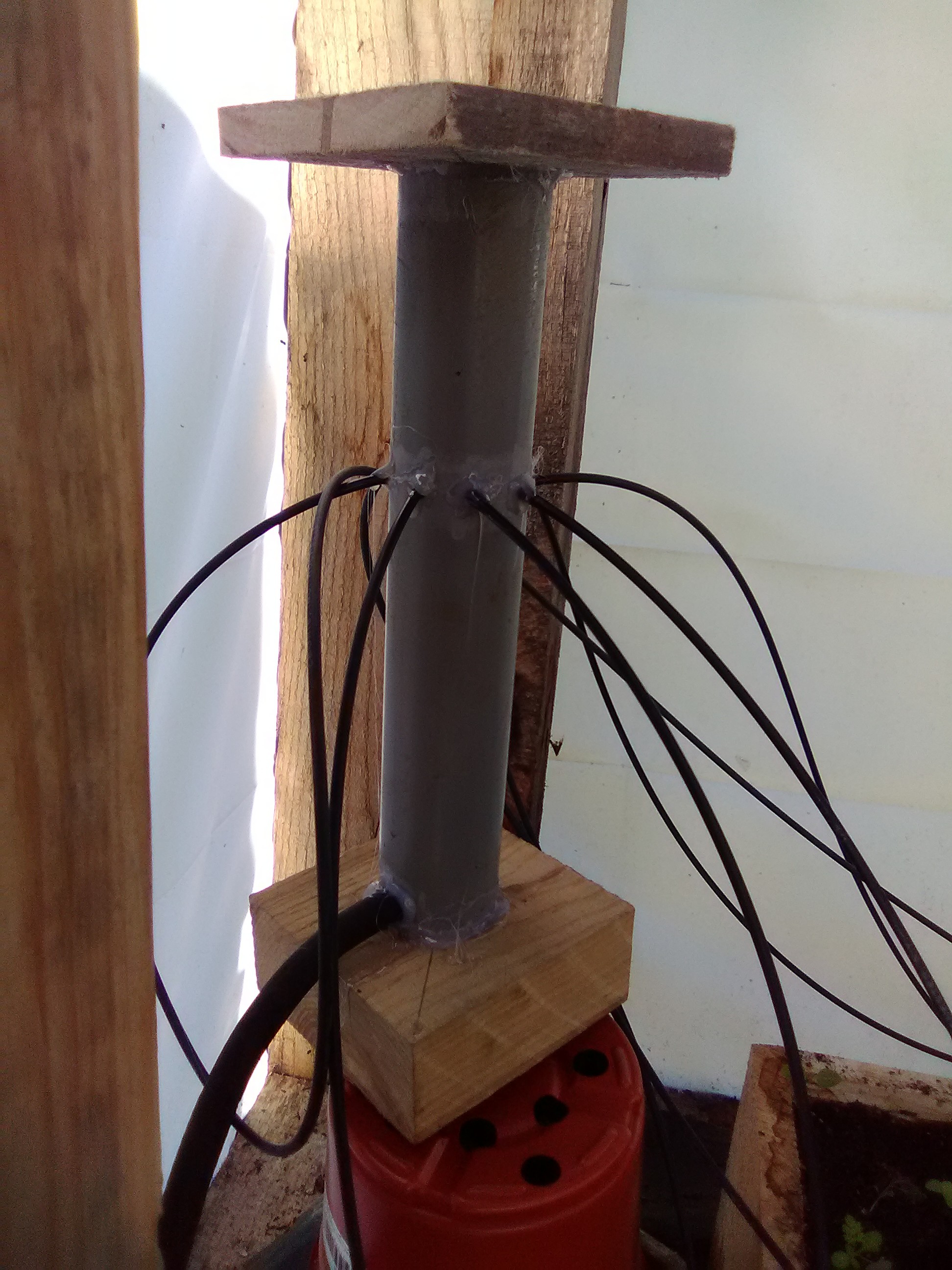
The bolt on the bottom (not shone) BTW, is a drain. I am hoping the long piece of PVC will act as a sediment trap and I can drain the sediment out and it will not clog up my little feeder lines. There is very little pressure in this system so clogs are a worry.
Each big plant on the ground gets one feeder, the long box on the left gets one, these plants will be transplanted outside soon. The flowers in the far back get one as they are only active in the center of the box. These managed to live over the winter. The herbs on the right have two feeders. I had to stick wire in the hoses to adjust the flow rates of the various feeds and I made little wire clips to hold the hoses in place in the plants.
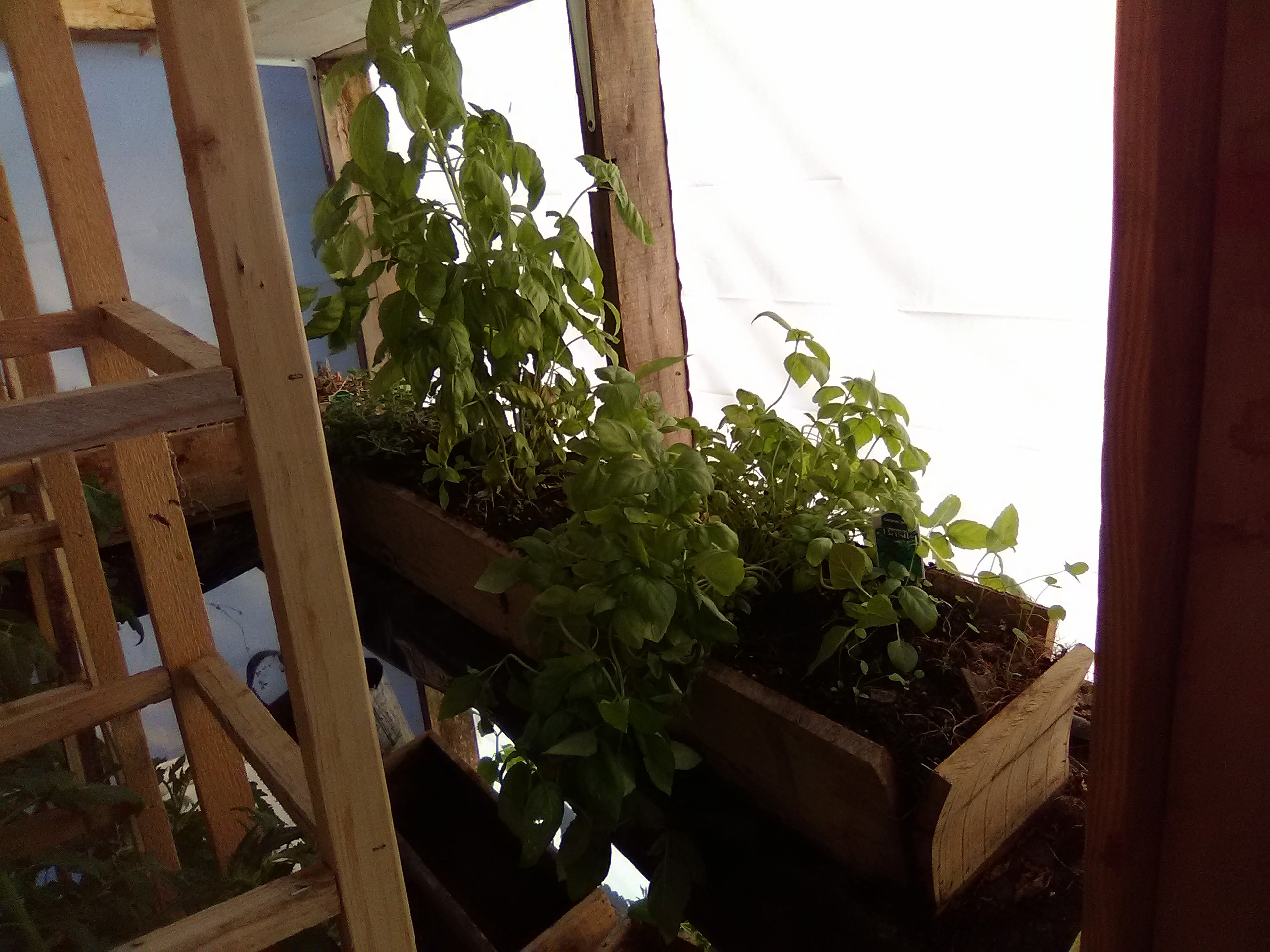
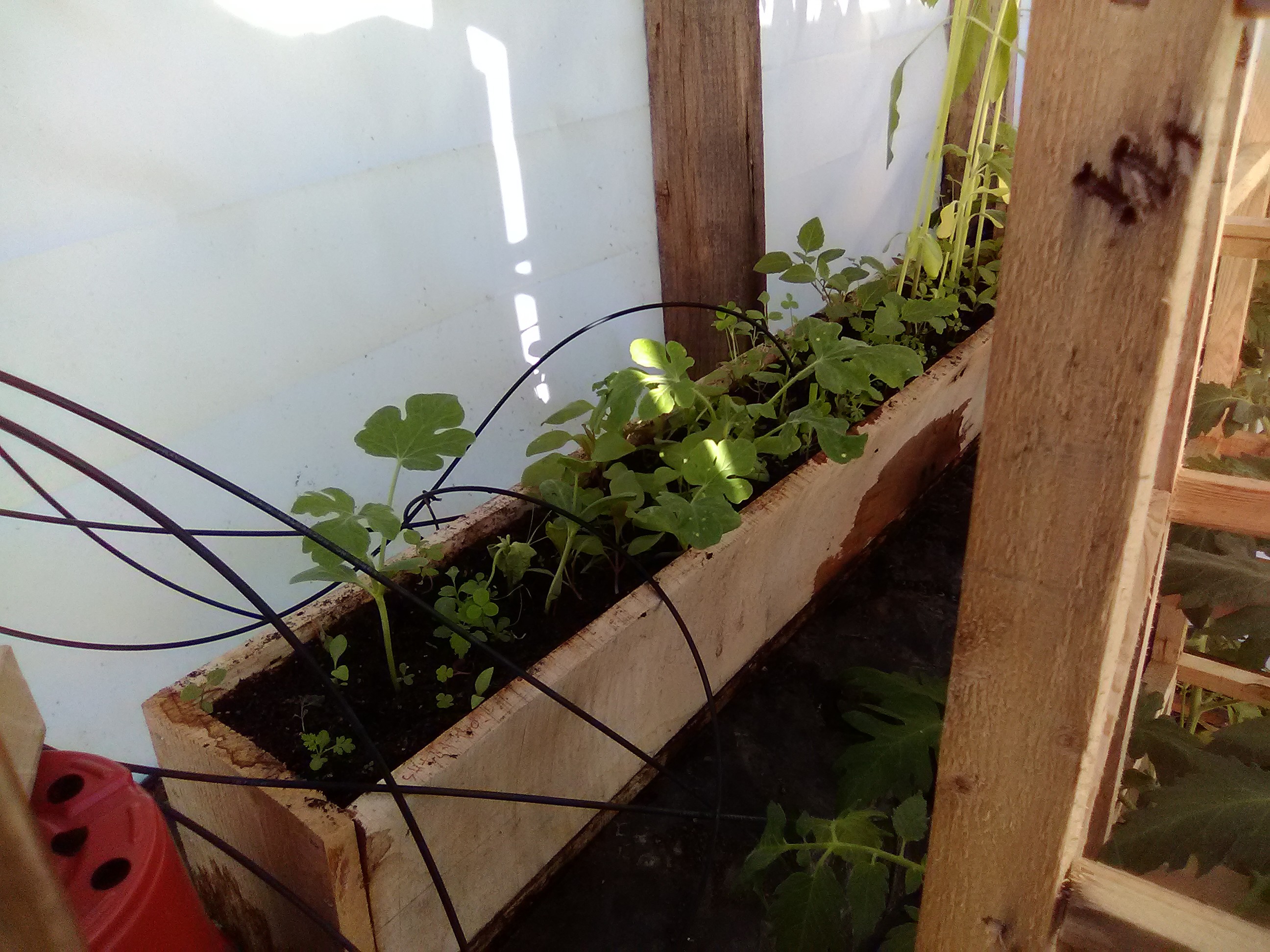
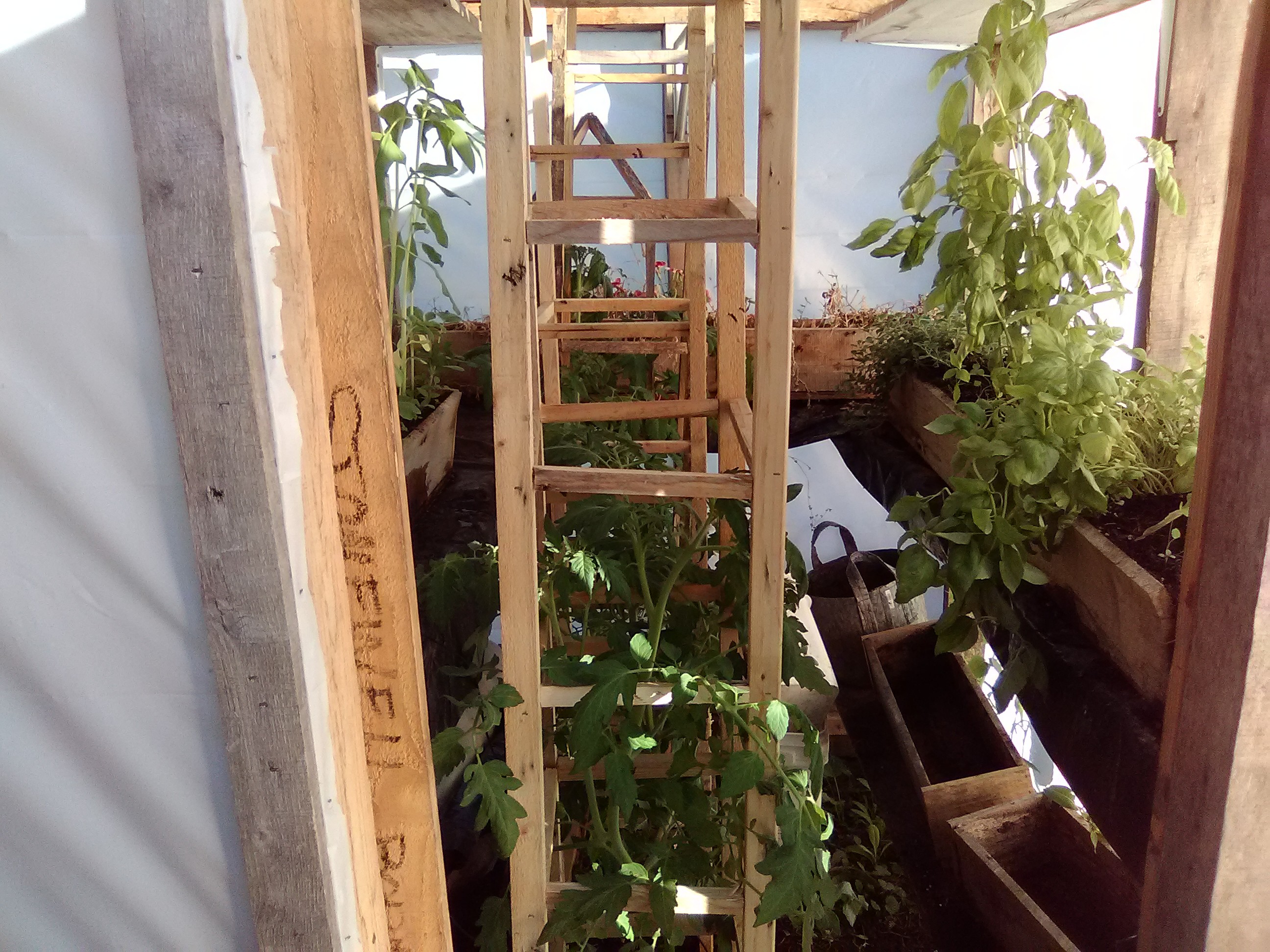
Fast Forward two years. Ok, some lessons learned.
First, get a submersible pump! Any other type will have priming issues after a while even if the pump is right next to the water. You can not seal the pump up enough so it will not get wet and nasty, so just cut to the chase and get one that is meant to go in the water. Next, if your water source, in my case the pond, has big swings you are best off making a float to hold the pump, and using something like stiff stainless wire (tig fill rod works great) to suspend the pump a foot or so below the float. This keeps the pump is good water as the pond level goes up and down. The submersible pump gets rid of priming issues and waterproofing issues.
The solar cell proper, that worked great. I guess you could use it with a a battery (an old laptop battery with it's charge controller and discharge protection. But be aware you are going to discharge it all the way every day. Perhaps set the low voltage limit to more like 3.8V and the upper limit to 4 so it does not cycle as hard. A battery really is not necessary though. I got plenty of water when the sun was out...
A water return system.. I is hard to see in the pictures but the shelves are covered with black plastic and so any water just runs off of it. I found an old pool pump and it's hosing and I wanna make a water return system. A frame with a tarp to catch all the water and use that pool hose to funnel it back into the pond. Reduce waste, keep the not give what I can back to the pond and cut down on the weeds in and around the greenhouse. Yea the weeds grow up both inside and around the outside cause it gets wet with the runoff.
And he manifold. No hot melt glue! Holds for 2 years and peels off. Seal that up with good quality 24 hour epoxy. I had flow issues between the feeds. I found I could balance the by sticking pieces of fence wire down the little feeder tubes. It is not an exact science but in general as long as everything is wet for a while and dry for a while every day things seem to do well, and the simple solar ensures that things are wet when the sun is beating down.
Oh an done last thing. Check valves. Put one on the far side of the pump and one up by the manifold. Try and keep the top half primed. It sucks when it takes a few minutes to see a change at the pump have an effect at the plants. Keeping the system fill gets rid of that lag.
 matthewkleinmann
matthewkleinmann